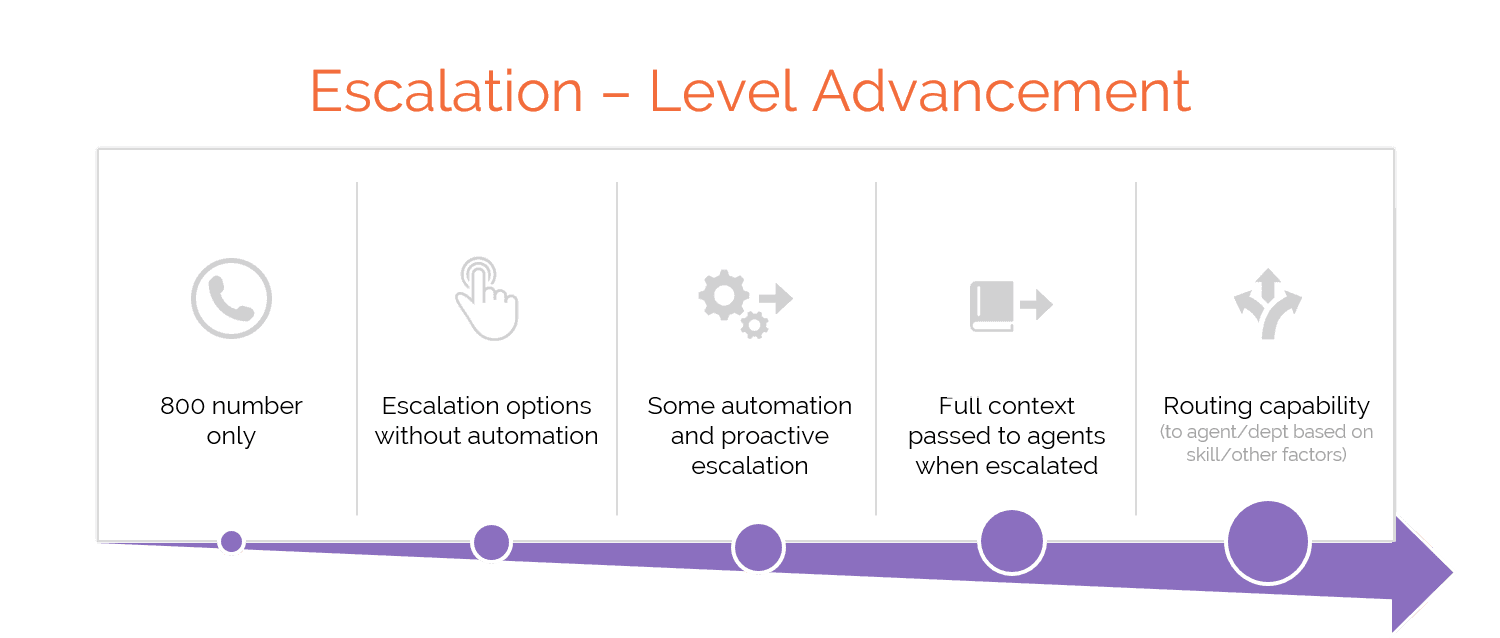Nothing is more crucial to your long-term success than a cohesive, well-executed customer experience (CX) strategy. Yet, many businesses struggle to unify their CX approach and bring much-needed focus to their initiatives.
In this article, we’re taking a closer look at one of the key CX capabilities for brands to offer their customers today: escalation.
Escalation maturity factors
When your customers are unable to resolve issues on their own, or are being handed off to another team, their frustration levels often increase. In fact, most consumers expect service teams to already know their contact information, interaction details, and product history when their conversation begins. The key to delighting customers is not surprising them with over-the-top gestures, but delivering the experiences they truly want and expect.

Here are the most important factors for your escalation strategy:
Seamlessness of the experience, i.e. allowing customers to stay within their preferred channel
Automated, proactive escalation of certain situations based on customer activity
Context for agents handling escalations, ensuring customers don’t need to repeat their issue
Optimization of escalation channels
Ability to route escalations to the agent or department best equipped to handle them
The 5 Levels of Escalation

Level 1
Characteristics
At Level 1, customers’ only escalation option is to call a customer service hotline. However, 63% of U.S. adults believe that companies that don’t offer options other than a 1-800 number seem outdated or old-fashioned.
How to move to Level 2
To reach Level 2, introduce more options for your customers to get additional help when they need it. Prioritize new channels based on what already has high adoption with your current customers and your target market.
Also, keep in mind that some escalation options may be better suited than others to address your most common customer questions. As an example, if a number of your escalations deal with complicated product setup, consider offering video chat so agents can visually demonstrate what customers need to do.
Level 2
Characteristics
Level 2 companies offer more escalation options than a traditional hotline, but struggle with manual processes. Also, because there is often not enough contextual information being passed during an escalation, customers must often repeat their story.
How to move to Level 3
To move to Level 3, make sure you are passing along some basic context to your agents. The more information you give them about who the customer is and what they need, the quicker they can resolve the issue.
Another way to advance would be adding more automation — words, activities, or customer attributes that trigger a proactive outreach or an automatic escalation to an agent. For example, a customer who puts certain items in their online shopping cart might receive a proactive chat message from an agent. This type of outreach can make a huge impact: 73% of customers who were contacted proactively and had a positive experience said it led to a positive change in their perception of the brand.
Level 3
Characteristics
When customers transition from channel to channel, agents receive basic context. At Level 3, you’ve also added more automation and enabled proactive escalation based on factors such as customer information and online cart contents.
How to move to Level 4
Increase your level of sophistication by giving agents deeper contextual information, such as:
Transcripts of previous interactions
Pages on your website the customer was viewing before they escalated
Full customer profile and purchase history
You’ll also need to ensure the escalation experience is consistent from channel to channel. Both these enhancements rely on having a unified view of your customers in a customer engagement system.
Level 4
Characteristics
Regardless of where customers begin their interactions, escalations are effortless and the experience is consistent. Responding agents receive the full context of previous interactions and other relevant customer information, so they can pick up where the last channel left off. This results in a smooth experience for customers, who can quickly get the answers they need without needing to repeat themselves.
How to move to Level 5
Ensure customers never have to switch devices when they move to a new channel. For instance, if they’re using chat on your site, allow them to escalate to a voice or video call in their browser instead of having to pick up the phone.
Also, consider adopting an approach where your system can determine the best channel for each customer at each touchpoint. The customer is placed in the optimal channel based on where they are in the customer journey, their demographic information, interaction history, and other contextual data.
Another way to enhance your escalation process is to embrace agent orchestration, where each customer is matched with the best available agent depending on their situation. That way, customers who escalate (who may have already tried and failed to resolve an issue on their own) are more likely to be paired with the agent best equipped to resolve their specific issue.
Level 5
Characteristics
At the highest level of intelligent escalation, you use agent orchestration to assign available agents who can best handle an incoming issue or a proactive customer outreach based on their expertise. Customers can quickly escalate from one channel to another with a single click, and are not forced to switch devices often, if ever. You may also be using an approach where you automatically determine the optimal channel for each customer based on their needs.
Editor's Note: This article was originally published on astutesolutions.com. Any statistics or statements included in this article were current at the time of original publication.
























